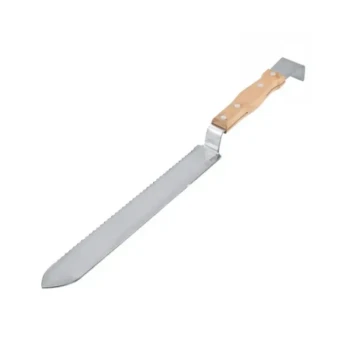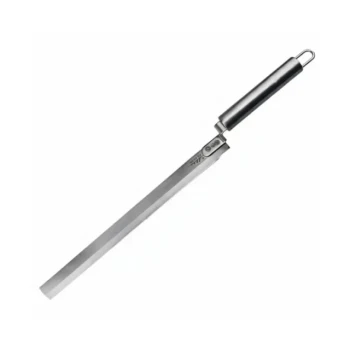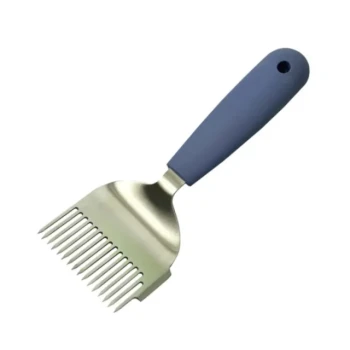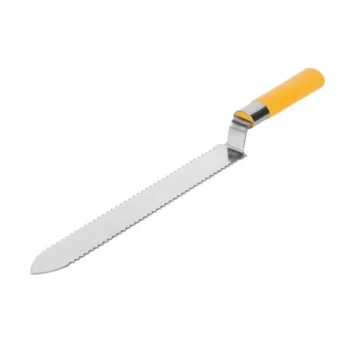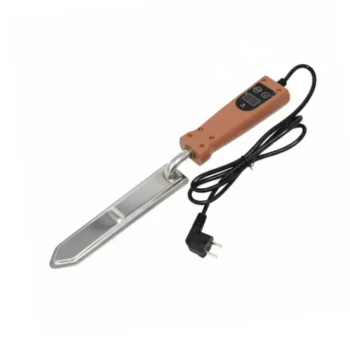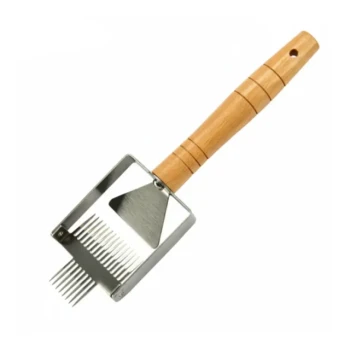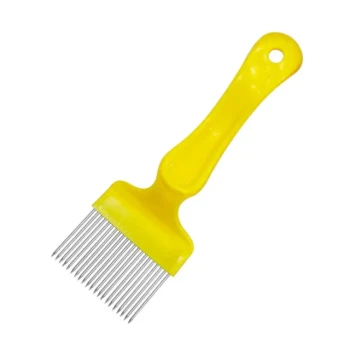The essential step in preparing honey frames for extraction is uncapping them. This process involves carefully removing the thin layer of beeswax that seals each honeycomb cell, allowing the honey to flow out. This is typically done on both sides of the frame using a heated knife to slice off the main cappings and a capping scratcher to open any cells the knife missed.
Your goal is not just to uncap the frames, but to manage the entire process—from hive to honey house—in a way that ensures high-quality honey, minimizes stress on your bees, and prevents a frantic robbing frenzy.
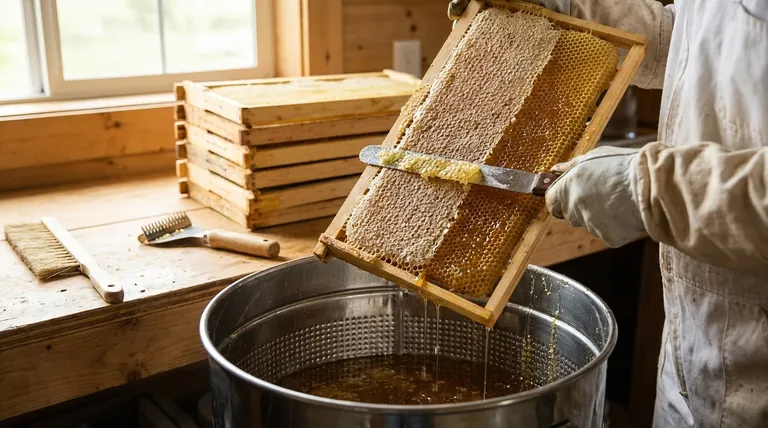
The Pre-Harvest Checklist: Setting the Stage for Success
Before you bring a single frame indoors, proper preparation is critical. This initial stage dictates the quality of your honey and the safety of your apiary.
When to Harvest: The 80% Rule
Bees cap honey cells once the nectar has been cured and its water content is below 18%. This prevents fermentation and spoilage.
A frame should be at least 80% capped before you consider harvesting it. Fully, 100% capped frames are ideal, as this is the bees' signal that the honey is perfectly ready.
Gathering Your Equipment
Having all your tools ready beforehand makes the process smooth and clean. You will need a dedicated space, often called a "honey house," and a specific set of tools for uncapping, extracting, and filtering.
Key equipment includes a bee brush or bee escape board, a sealed box for transport, a heated uncapping knife, a capping scratcher, the honey extractor itself, and filters for the final product.
Securing a "Honey House"
Extraction should always be done in a clean, enclosed space away from the hives. The smell of open honey is an irresistible trigger for worker bees, which can quickly lead to agitation and "robbing" behavior, where bees from various hives descend on the source.
Your kitchen, a clean garage, or a dedicated shed can serve this purpose, as long as it is bee-proof.
From Hive to Extractor: The Core Workflow
Once you've prepared, the physical work of moving and uncapping the frames begins. Each step is designed to be efficient and clean.
Step 1: Removing Bees from the Frames
Before taking frames, you must clear them of bees. This can be done frame-by-frame with a bee brush to gently sweep them off.
Alternatively, a triangle bee escape board can be placed below the honey supers a day in advance. This one-way door allows bees to move down into the brood boxes but prevents them from getting back up into the supers you plan to harvest.
Step 2: Transporting the Frames
Place the bee-free frames immediately into a sealed, bee-proof container for transport to your extraction space. This is a critical step to prevent opportunistic robbing from starting as you move between the apiary and your honey house.
Step 3: The Uncapping Process
With the frames safely indoors, the uncapping can begin. Glide a heated uncapping knife across the surface of the comb to slice off the wax cappings.
Use a capping scratcher or fork to puncture any remaining sealed cells that the knife missed. Remember to uncap both sides of the frame before placing it in the extractor.
Alternative Extraction Methods
While a centrifugal extractor is standard, other methods exist. A honey press or the crush and strain method involves breaking up the comb and either pressing or letting the honey drain through a filter. This destroys the drawn comb.
Flow Frames represent a completely different approach. By turning a key, the cells within the specialized frame split, allowing honey to drain directly out of the hive without removing frames or disturbing the bees.
Understanding the Trade-offs and Pitfalls
Every method has its considerations. Being aware of the potential downsides is key to a successful harvest.
The Risk of Robbing
The primary danger during harvest is inciting a robbing frenzy. The scent of exposed honey can cause bees to become highly agitated and aggressive as they attempt to steal the honey. This is why working quickly, cleanly, and away from the hive is non-negotiable.
Handling Damaged or Flimsy Comb
Be careful when handling frames, especially those with newly drawn or flimsily attached comb. Dropping a frame not only makes a sticky mess but also wastes the bees' hard work.
Managing "Wet" Frames After Extraction
After extraction, the frames are "wet," meaning they are still coated in a thin layer of residual honey. Storing them like this can attract pests.
The best practice for hobbyists is to return these wet frames to the hive. The bees will quickly clean up every last drop, providing them with valuable resources and leaving you with clean combs for the next season.
Making the Right Choice for Your Goal
Your approach to preparation and extraction depends on your scale, equipment, and philosophy.
- If your primary focus is a traditional hobbyist harvest: Master the use of a heated knife and scratcher, and prioritize having a clean, bee-proof space separate from your apiary.
- If your primary focus is convenience and minimal disturbance: A Flow Hive may be the ideal choice, as it eliminates the need for uncapping, extracting, and even removing frames from the hive.
- If your primary focus is maximizing hive health: Always return the "wet" frames to a strong hive after extraction so the bees can reclaim the residual honey and clean the comb.
Ultimately, a well-prepared and orderly extraction process is the final, rewarding step in your partnership with the bees.
Summary Table:
| Step | Key Action | Purpose/Consideration |
|---|---|---|
| Pre-Harvest | Check for 80% capped frames; gather equipment. | Ensures honey is ripe; prevents fermentation. |
| Bee Removal | Use a bee brush or escape board. | Clears frames of bees without harm. |
| Transport | Move frames in a sealed, bee-proof container. | Prevents robbing frenzy during transit. |
| Uncapping | Slice wax cappings with a heated knife; use a scratcher for missed cells. | Allows honey to flow out during extraction. |
| Post-Extraction | Return "wet" frames to the hive for cleaning. | Provides bees with resources; avoids pests. |
Ready to streamline your honey extraction with professional-grade equipment? As HONESTBEE, we supply durable, high-performance beekeeping supplies—like heated uncapping knives, bee-proof transport containers, and extractors—tailored for commercial apiaries and distributors. Our wholesale-focused operations ensure you get reliable tools that minimize stress on your bees and maximize honey quality.
Contact us today to discuss your bulk equipment needs and elevate your harvesting efficiency!
Visual Guide
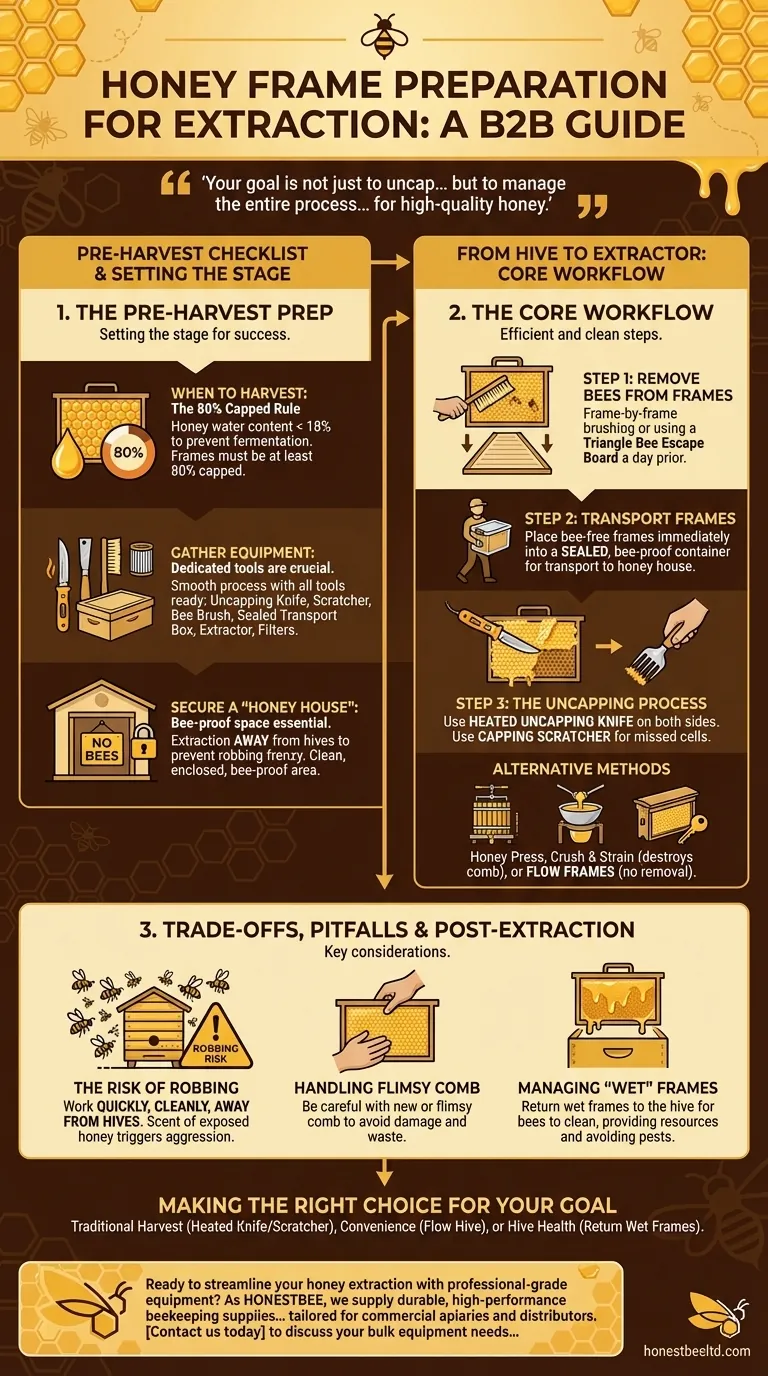
Related Products
- Electric Heated Honey Uncapping Knife for Beekeeping
- Professional 12V DC Electric Uncapping Knife for Beekeeping
- Stainless Steel Dual Blade Uncapping Plane
- Professional Z-Shaped Multi-Function Uncapping Knife for Beekeeping
- Professional All-Stainless Steel Uncapping Knife for Beekeeping
People Also Ask
- What is the use of an uncapping knife? Master the First Step of Honey Harvesting
- What is the use of a bee knife? Essential for Efficient Honey Harvesting
- What is the benefit of the serrated edge on an uncapping knife? Unlock Faster, Cleaner Honey Extraction
- How does an uncapping fork work, and what are its benefits? Achieve Precision Unsealing for Your Honey Frames
- What temperature should a honey knife be? The Key to Clean, Fast Uncapping



